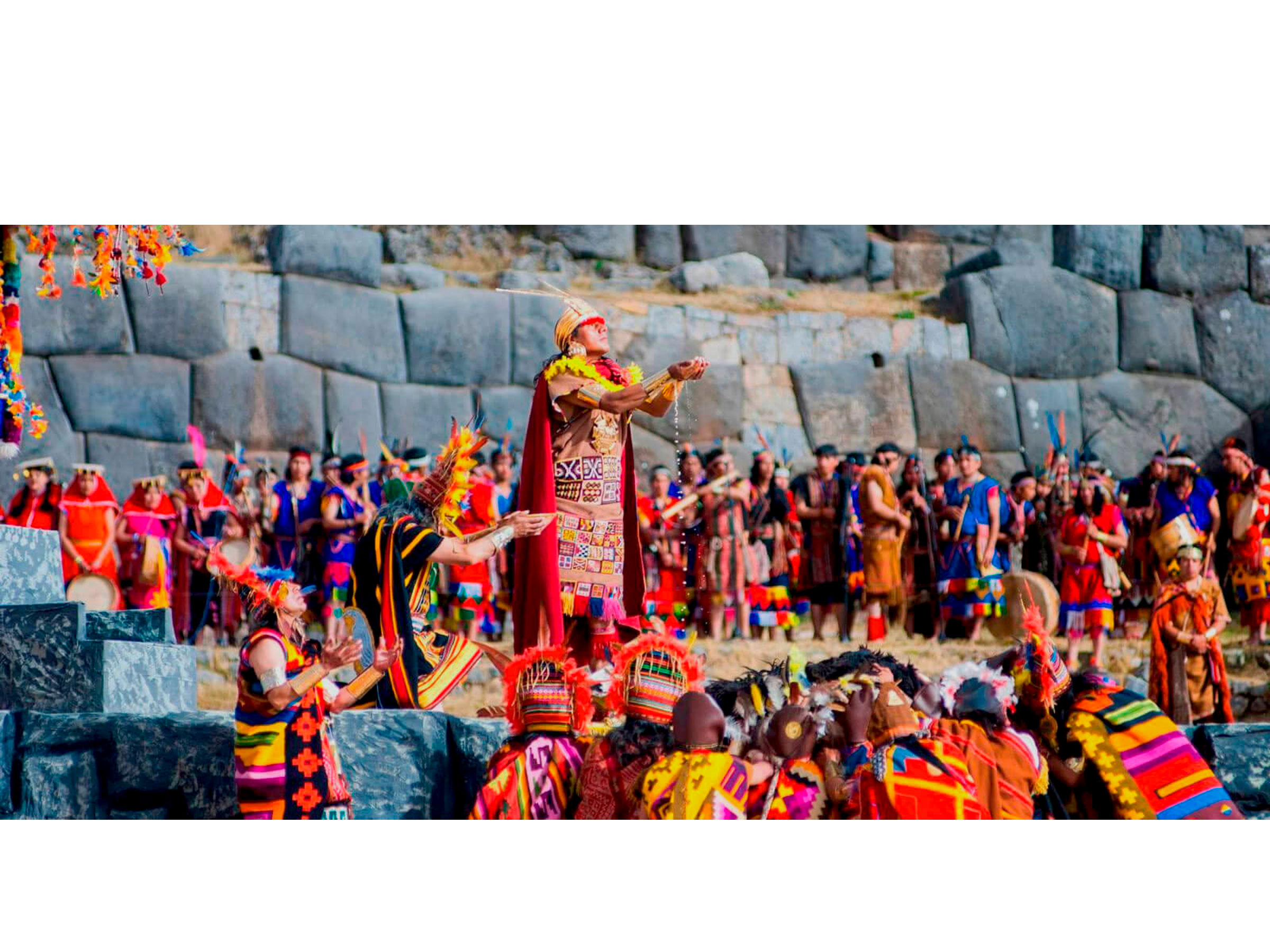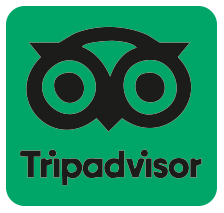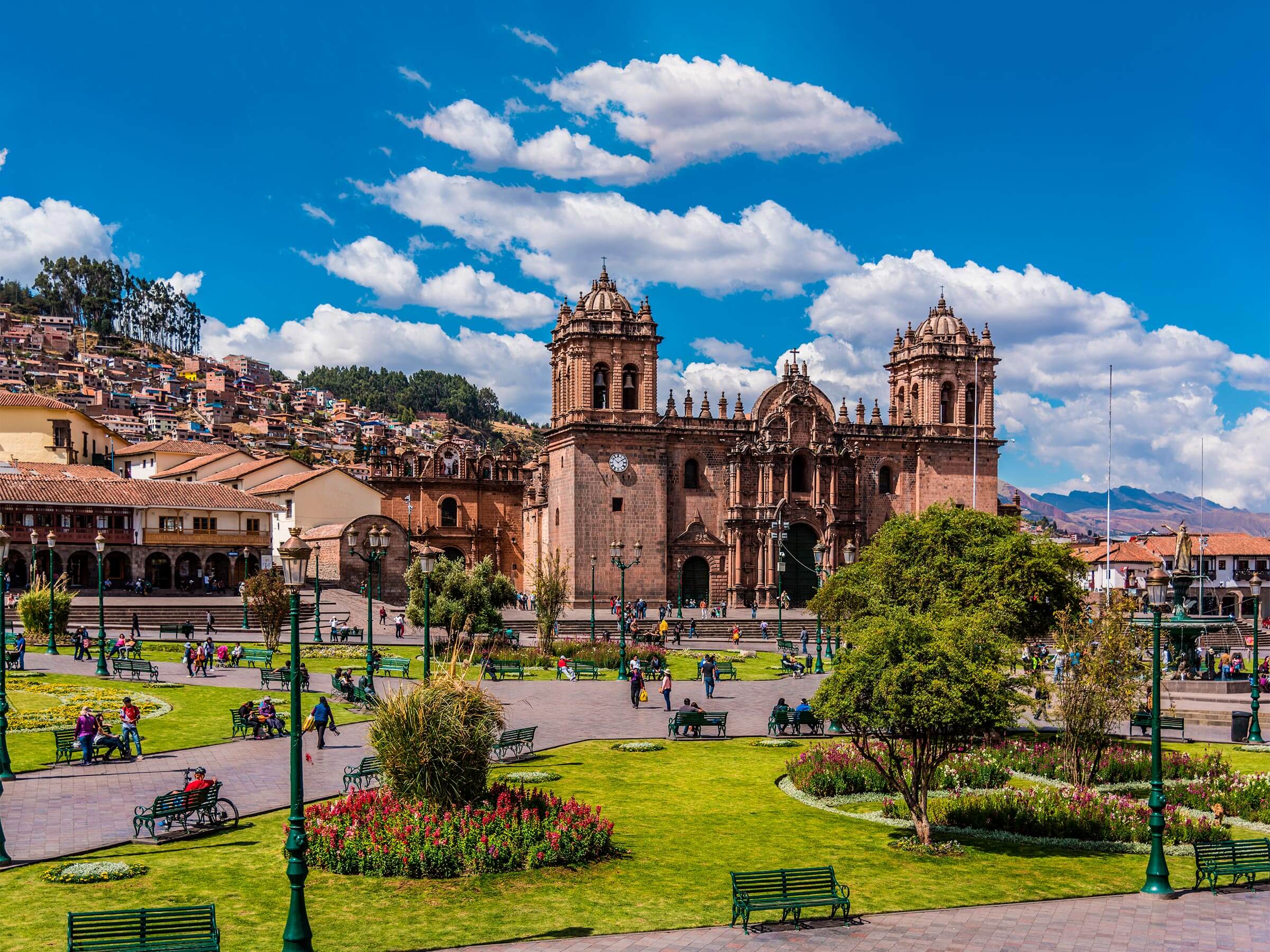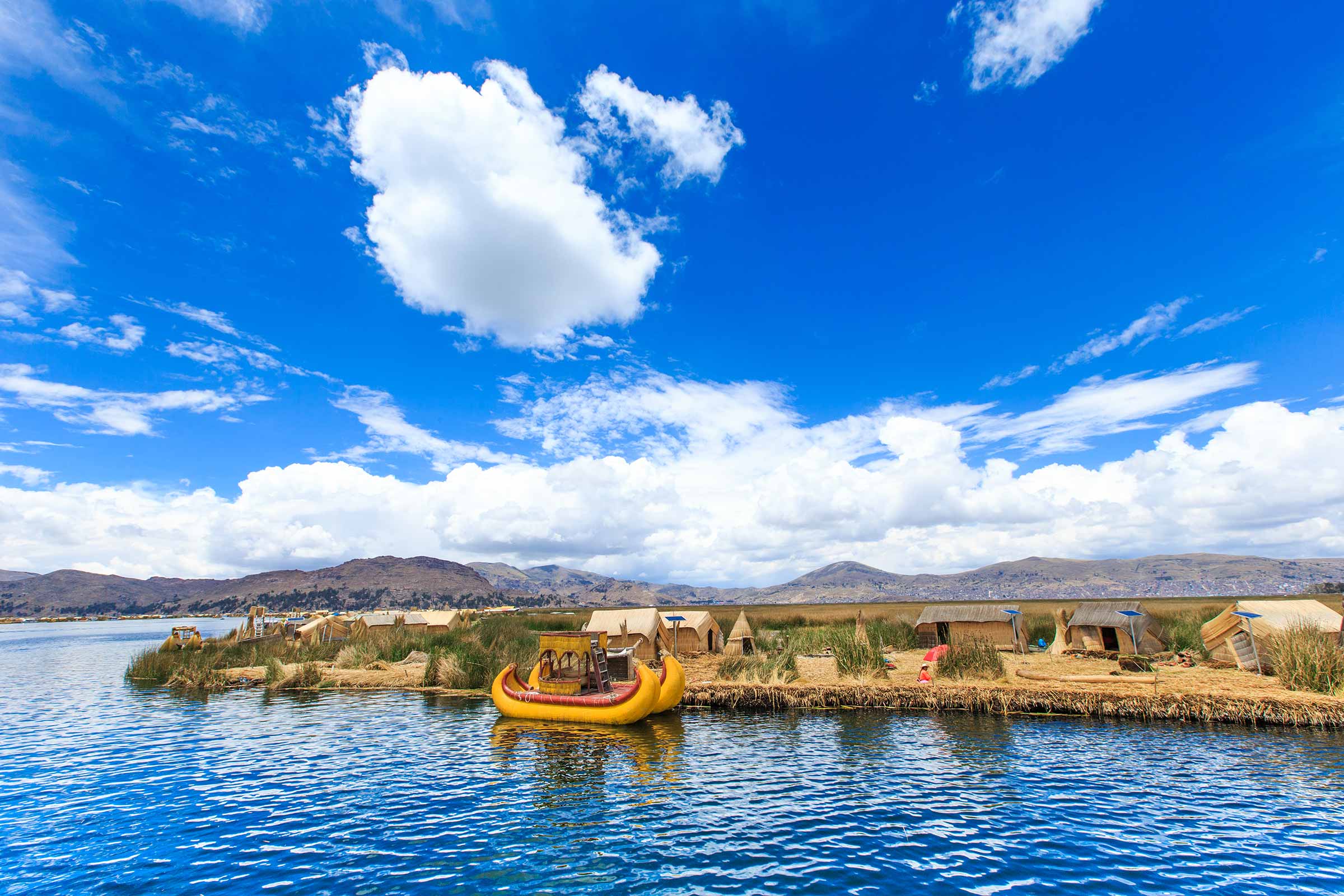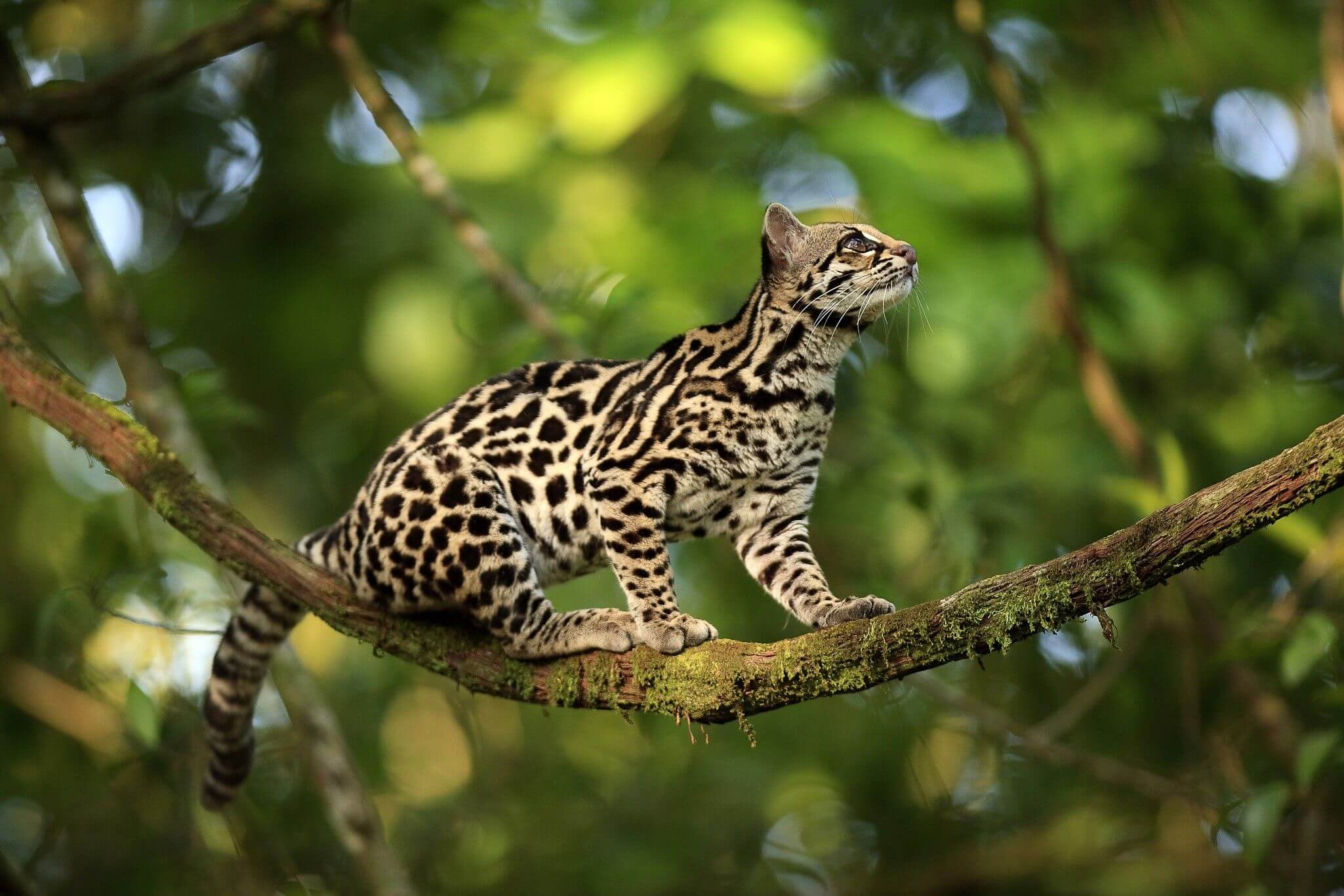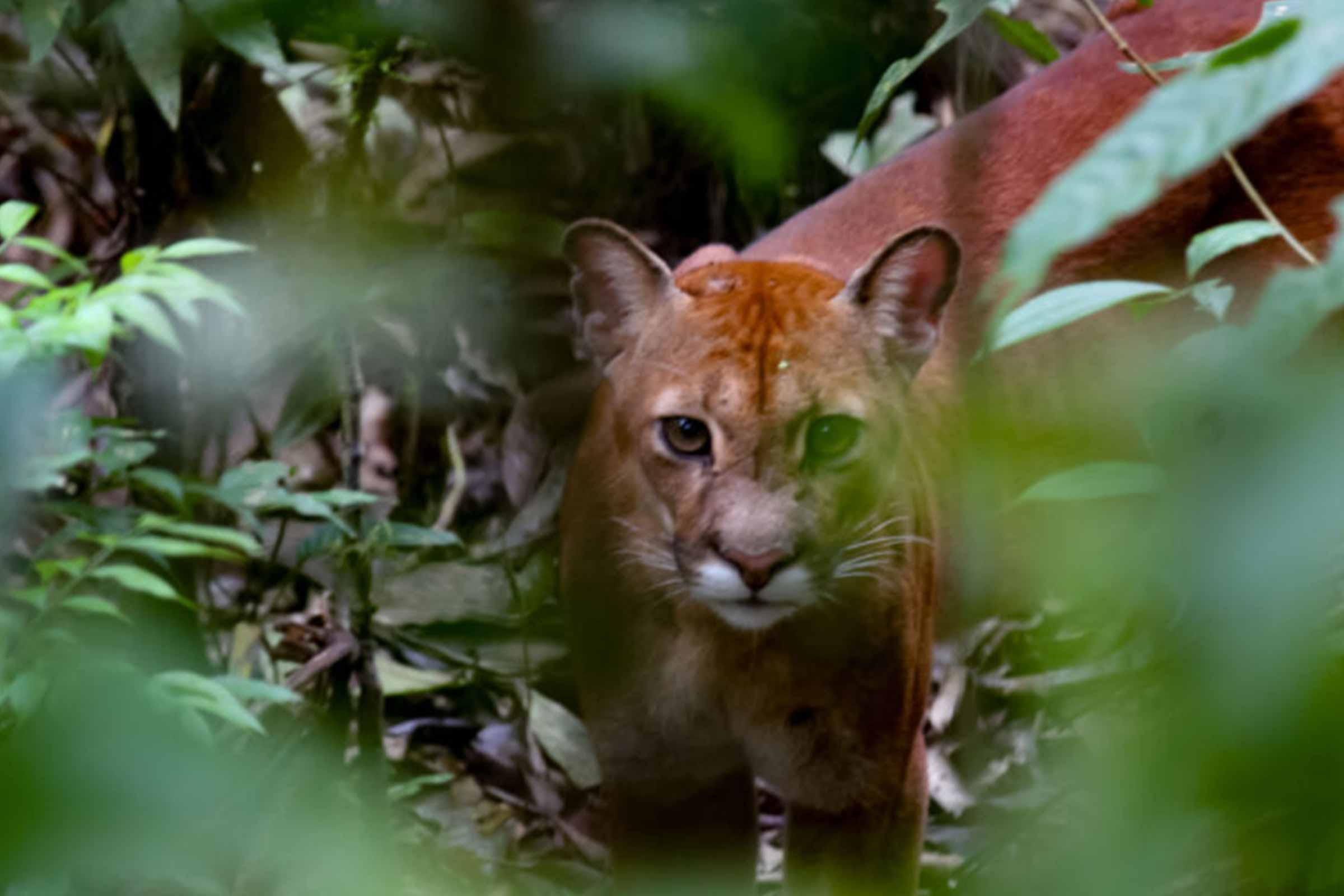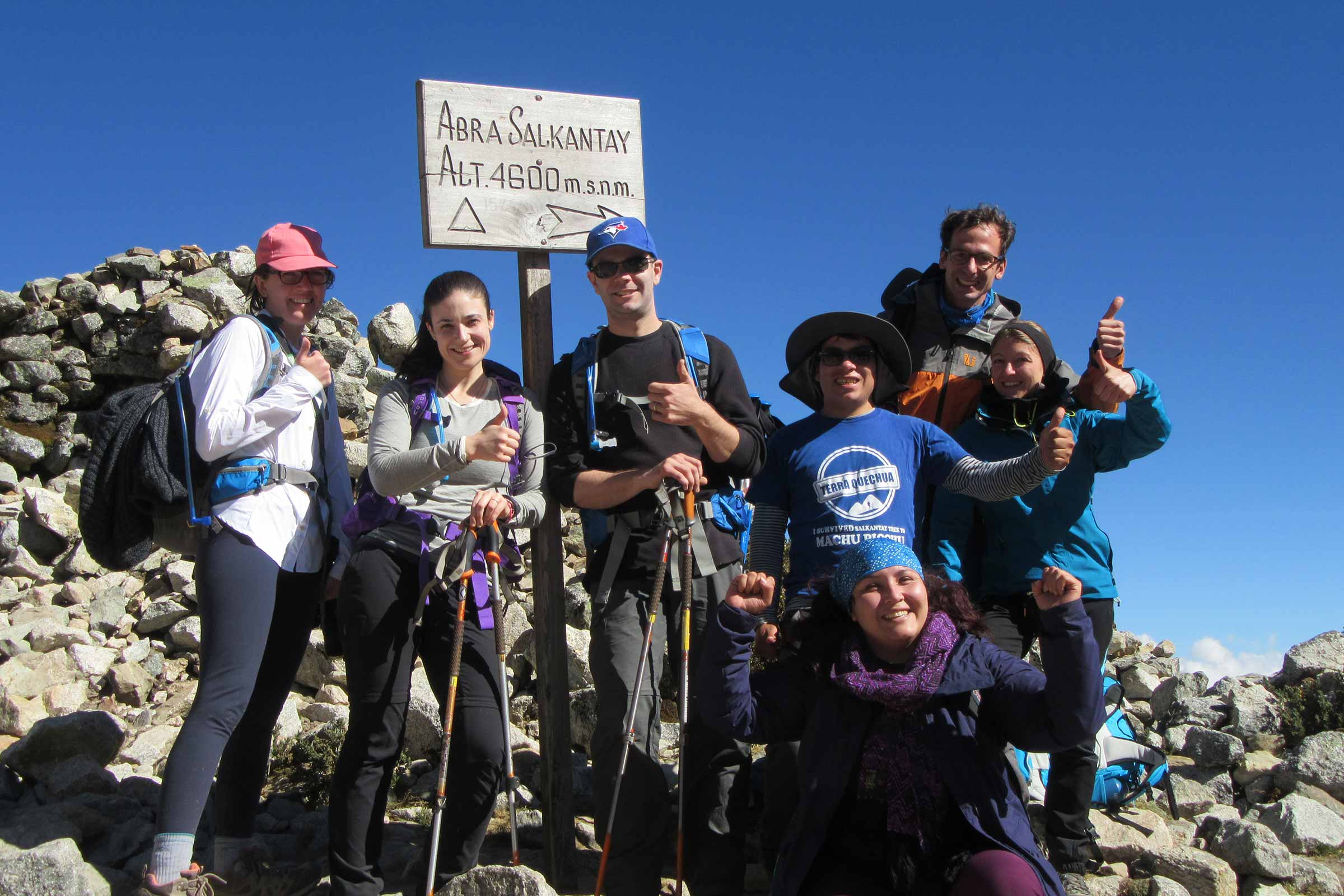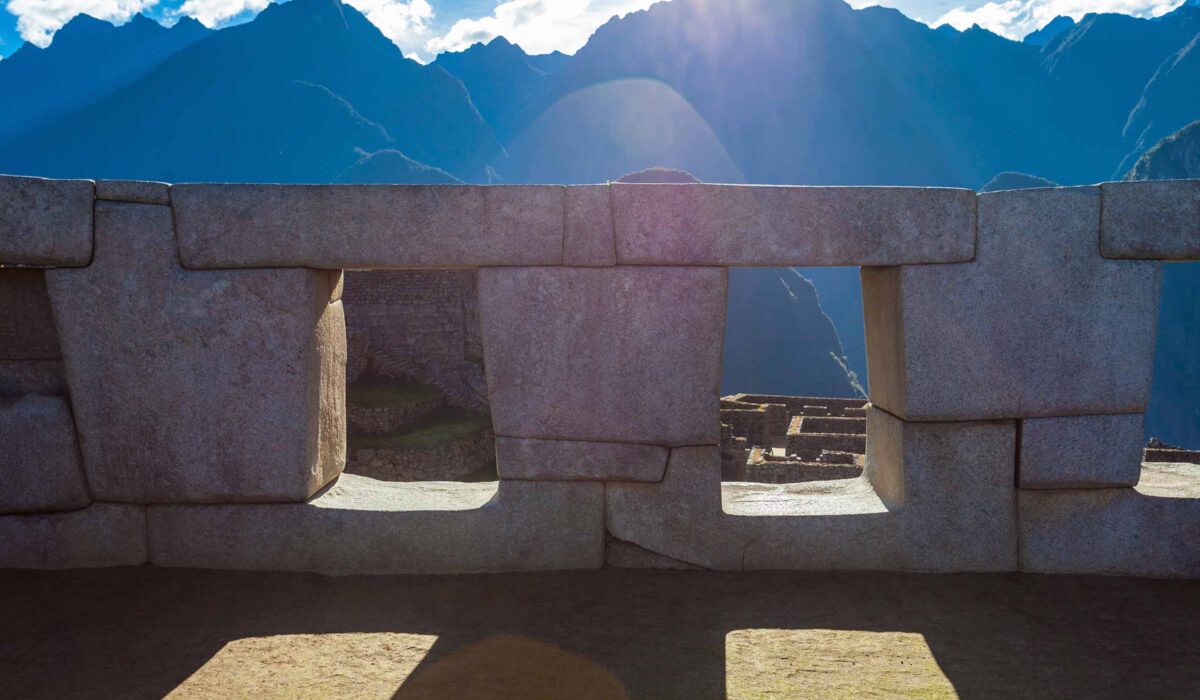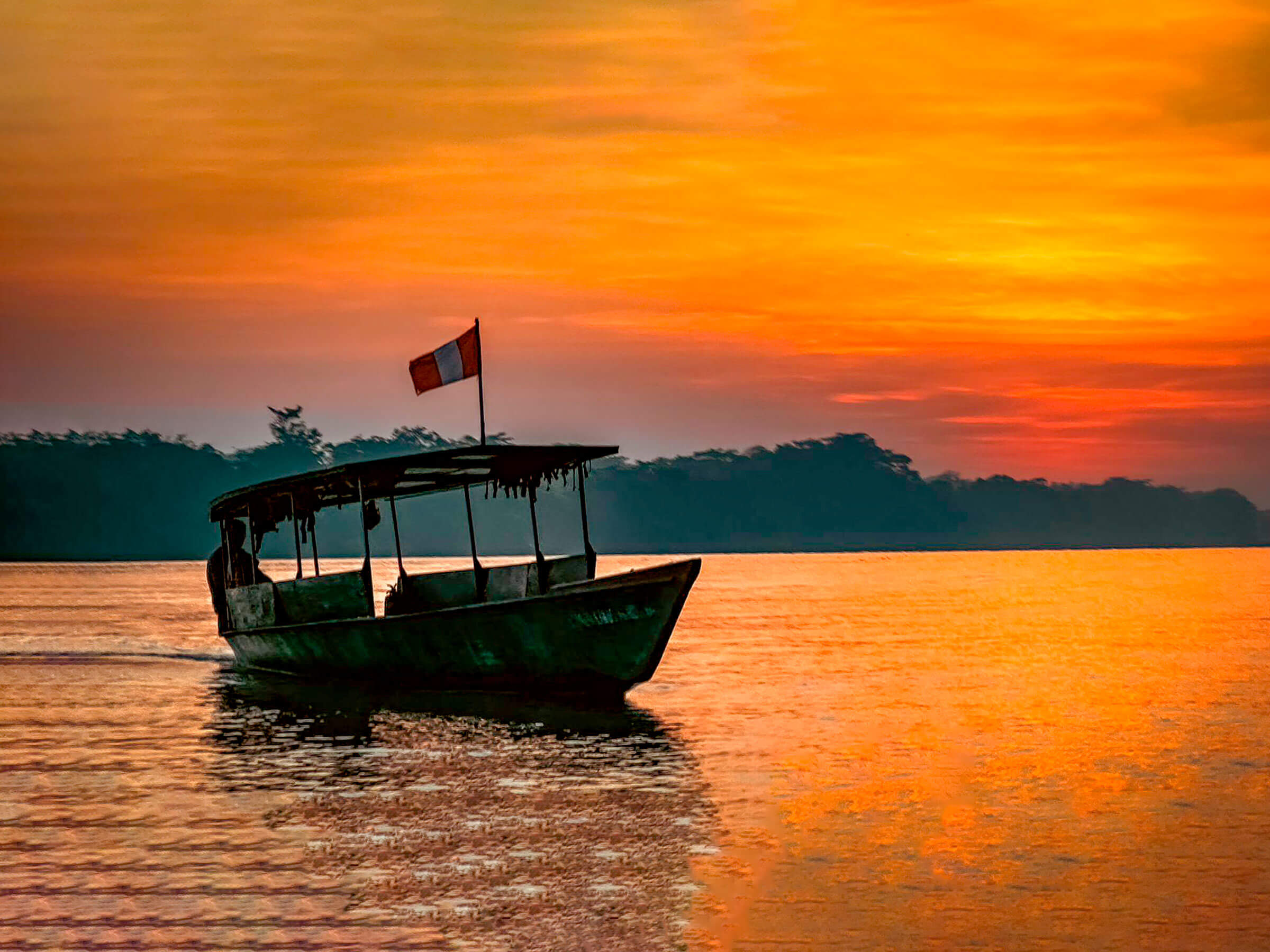Overview
Duration
Type tour
Difficulty
Altitude
Acomodation
Group size
Experience the best of two completely different worlds with our 10 days and 9 nights “Inca Trail and Amazon” tour package. This trip will take you from the ancient wonders of the Inca Trail to Machu Picchu in Cusco to the breathtaking biodiversity of the Amazon in Puerto Maldonado. It is a unique opportunity to explore both the history and culture as well as the nature and wildlife of Peru.
- Inca Trail to Machu Picchu: Begin your adventure in Cusco, where you will embark on an exciting trek along the Inca Trail. Discover ancient Inca trails, spectacular ruins and breathtaking panoramic views as you approach the majestic citadel of Machu Picchu.a
- Ollantaytambo: On your way to Machu Picchu, visit the charming village of Ollantaytambo. Explore its cobblestone streets and impressive Inca ruins, which will transport you back in time to the Inca era.
- Amazon Rainforest in Puerto Maldonado: Then, dive into the Amazon rainforest in Puerto Maldonado. Navigate the rivers and discover the rich flora and fauna of the Amazon. You will be able to observe exotic birds, playful monkeys and a variety of medicinal plants.
This 10 days and 9 nights tour package will take you through the Inca Trail with immersion in the Amazon jungle. It is a journey that will allow you to enjoy the richness of both the Inca history and culture as well as the nature and wildlife of the Peruvian Amazon. Get ready for a transformative experience in one of Peru’s most breathtaking destinations!
Itinerary Inca Trail And Amazon 10 Days / 9 Nights
DAY 1: CUSCO
pick up from de Airtport and transfer to your hotel. Spend the rest of the day relaxing and exploring this fascinating city, and getting used to the altitude.
Cusco is the continent’s oldest continuously inhabited city, and the hub of the South American travel network. The city attracts travellers who come not just to visit a unique destination but also to experience an age-old culture very different from their 20th century way of life; one could easily spend a week just in and around the area. Inca-built stone walls line most of the central streets and you don’t have to go far to see other major Inca ruins. It is a city steeped in history, tradition and legend.
Every year Cusco attracts thousands of travellers who come to delve into its noble but tragic past. It is the perfect base for optional explorations around the city and area as well as a range of outdoor activities.
Cusco’s numerous colonial churches are one of the city’s most common sights. The Cathedral was started in 1559 and took 100 years to build; it is also one of the city’s greatest repositories of colonial art. Immediately in front of the entrance is a vault containing the remains of the famous Inca historian, Garcilaso de la Vega. Also worth visiting are the churches of La Compañía, La Merced and San Francisco.
While most ruins are just outside of the city, the main ruin within is that of the Qoricancha, once the Inca Empire’s richest temple. Today the ruin forms the base of the colonial church of Santo Domingo. During Inca times this temple was literally covered with gold, but within months of the arrival of the first conquistadors this incredible wealth had all been melted down. It is left to the individual imagination to envision the magnificence of the original structure.
There are several good museums in Cusco, including the Archaeological Museum, which also houses a small art museum, the Regional History Museum and the Religious Art Museum. Our best advice for exploring Cusco is to wear a comfortable pair of shoes, arm yourself with a city map and set off to explore!
DAY 2: SACRED VALLEY OF THE INCAS (PISAC - OLLANTAYTAMBO)
We will pick you up from the hotel between 7.30 am – 8:00 am to start the tour of the Sacred Valley of the Incas, we will visit the impressive ruins of Pisac, the colorful handicraft market (only on market days) at noon we will have our lunch in the town of Urubamba and the great ruins site of Ollantaytambo which is located next to the village of the same name where we catch our breath and prepare for the trek ahead. We spend the night in this small village before starting the trek the next morning.
DAY 03 - 06 : INCA TRAIL
The first day Inca Trail to Machu Picchu is physically challenging but worthwhile, and the excursion is within the ability of most reasonably fit. It is a 44-km (27 mile) hike, with 3 high passes to be crossed, one of which reaches an elevation of 4200m (13776 ft). The trail is often steep, and it may rain even during the dry season. The temperatures at night may fall below zero, so it is important to come prepared.
Depart Ollantaytambo for km 82 where we begin our walk in the footsteps of the Incas. Our local crew of porters, a cook, and an experienced, knowledgable guide look after us for the duration of the hike. Porters carry the majority of the gear for the hike, so those travellers doing the hike only carry a small daypack with water, rain gear, snacks, a camera, etc. As you walk the trail that linked this ancient empire, admire breathtaking views at every step as we move from high plateau areas to dense cloud forest. Depending on the season, you may see a great variety of flora, including miniature and large orchids, and fiery rhododendron bushes.
You pass several smaller ruin sites, the first of which is Llactapata. The second day climb the long steep path to Warmiwañusca, or Dead Woman’s Pass. At 4198 m (13769 ft) above sea level, this pass is the highest point of the trek. The second pass of the hike is at 3998 m (13113 ft) where on clear days, we enjoy superb views of the snow-capped Cordillera Vilcabamba. The trail goes through some beautiful cloud forest on the gentle climb to the third pass, where you will walk through a causeway and a tunnel, both original Inca constructions. The highest point of the third pass is at 3700m (12136 ft). On clear days you are rewarded for all this work with beautiful views of the Urubamba Valley below. Soon you reach the serene ruins of Phuyupatamarca, or the ‘Town above the Clouds’, at about 3650 m (11972 ft) above sea level. We will camp either here or an hour and a half further along close to Wiñay Wayna (Forever Young) ruins, a grandiose terraced hillside site, with panoramic views of the valley below and just a short hike from Machu Picchu.
On the final day of the hike we climb the steps to the Sun Gate overlooking the peaks that surround Machu Picchu. When the morning is clear, there is no way to describe the feeling of the first views of Machu Picchu, as the mist rises off the mountains early in the morning and the famous site appears in front of you. Following the visit to Machu Picchu, time allowing, travellers can opt to visit the Inca Bridge (15 min walk away) for no additional charge.
Machu Picchu is both the best and the least known of the Inca ruins. It is not mentioned in any of the chronicles of the Spanish conquistadors and archaeologists today can do no more than speculate on its function. The local Quechua farmers in the area knew of Machu Picchu for centuries, but it was not until an 11-year-old boy led the American historian Hiram Bingham (who was in search of Vilcabamba) to the site on July 24, 1911, that the rest of the world became aware of its existence. At that time the site was covered in thick vegetation, and Bingham and his team returned in 1912 and 1915 to clear the growth. Over the years, much work has been done on excavating and studying the site. Despite these efforts, many unanswered questions remain.
Distances of the inca trail:
Day 1 km 82 to Wayllabamba
- Approximate distance: 11 km
- Estimated hiking time: 5-6 hrs
Day 2: Wayllabamba to Paqaymayo
- Approximate distance: 12 km
- Estimated trekking time: 6-7 hrs
Day 3: Paqaymayo to Wiñaywayna
- Approximate distance: 16 km
- Estimated trekking time: 8 hrs
Day 4: Wiñaywayna to Machu Picchu
Wiñaywayna to Intipunku (Sun Gate)
- Approximate distance: 4 km
- Estimated trekking time: 1.5 hrs
Intipunku to Machu Picchu
- Approximate distance: 1.5 km
- Estimated trekking time: 45 mins
- Meals (3B, 3L, 3D)
DAY 7: CUSCO
Today is free to explore Cusco, considered the mecca of Peru and rightly so. This beautiful colonial town offers much to the visitor with its nearby ruins, cobble-stoned streets, museums, churches and lively atmosphere. Among the more adventurous optional activities available in Cusco are: horseback riding around archaeological sites such as Sacsayhuaman, Tambo Machay and Puca Pucara; white water rafting on the Urubamba River; and mountain biking down to the Sacred Valley, perhaps visiting an Inca ruin along the way. Hotel
DAY 8: PUERTO MALDONADO - MADRE DE DIOS RIVER - LODGE
We will have a fly from Cusco to Puerto Maldonado ,our staff will be waiting for you to go the principal Office in Puerto Maldonado, After the briefing with the guide you have time to take a breakfast by your own expense, then transport by bote to the Madre de Dios river port. After a one-hour boat ride, you’ll arrive at the Lodge where you’ll be given a fresh exotic fruit juice. You’ll get the key to your room.
After resting for a bit, you’ll go for a two-hour walk in the jungle. Your guide will tell you about the lush vegetation (some trees are 500 years old). You’ll also have the chance to see birds (parrots, macaws), monkeys snakes, butterflies… You’ll discover our wonderful jungle.
In the evening, you and your guide will go for a boat ride on Madre de Dios River to look for caimansYou’ll spot the shiny red eyes of the caimans with a flashlight. You might also observe capibaras, the biggest rodents in the world.
Back at the Lodge you will be served dinner.
DAY 9: MONKEY ISLAND - TAMBOPATA NATIONAL RESERVE - LODGE
You’ll wake up early (5.30am) to get to a canopy, that is 40 metres high. From up there you’ll get to see different species of birds, such as macaws or Eagles.
After breakfast, you’ll go to the Monkey Island, which is jsut across from our Lodge. There, you’ll see different kind of monkeys. Then , you’ll take the boat again to get to the National Tambopata Reserve. After a five kilometre walk, you’ll discover the amazing Sandoval Lake. It’s a real wonder, where you’ll see a great varierty of animals, such as birds, monkeys, sloths…After a typical lunch, you’ll go for a boat ride on the lake to see the animals from closer. If it’s a lucky day, you might see giant otters (animals in danger of extinction) or very big black caimans (the biggest one registered is five metre long).
You’ll be on your way back to the Lodge at sunset.
Dinner. Free time.
DAY 10: FLY PUERTO MALDONADO TO LIMA
After breakfast you’ll head back to the city to visit the local market and discover some tropical fruits. Your guide will take you to the airport or the bus station, end the tours.
Includes
- Briefing prior to departure
- 3 nights Hotel (2N Cusco – 1N Ollantaytambo)
- Sacred Valley and City Tour 2 days
- Air ticket Cusco – Puerto Maldonado – Lima
Inca Trail 4 days
- Pick up at your hotel in the morning and transfer in private transport to km.82 (starting point of the trail)
- Entrance fee Inca Trail and Machu Picchu (days 1-4)
- Personal tents: 2 people in each tent with capacity for 4 people.
- One inflatable mattress per person
- Dining tent with tables and chairs
- Kitchen tent
- Professional English-speaking guide (2 guides for groups of more than 10 people).
Chef and cooking equipment. - Porters (to carry tents, food and cooking equipment)
- Meals (03B, 03L, 03D + daily snack + daily tea service except last day). Vegetarian or special menus available at no additional cost.
- Filtered boiled water from lunchtime on the first day onwards.
- First aid kit including emergency oxygen cylinder
- Train ticket from Aguas Calientes to Ollantaytambo and Trasnport to Cusco
No Incluye
- Breakfast on the first day
- Lunch and dinner on the last day: after the guided tour at Machu Picchu, you can enjoy free time to further visit the ruins and choose to have lunch either in Machu Picchu or in Aguas Calientes at your own expense. Arrival in Cusco is estimated after nightfall, dinner being at your own expense too
- Sleeping Bag
- Visit to the hot springs in Aguas Calientes: a relaxing way to end-up the trek while you’re awaiting the return train to Cusco, only 10 minutes from the village center, entrance fee is s/10.00 (Peruvian Soles). Towels can be hired in Aguas Calientes
- Huayna Picchu entrance fee: if you would like to climb this mountain a new entrance fee applies ( US$80)
- Tips: please note that our agency staff is well paid so please feel free to tip or not as you wish
Packing list Inca Trail And Amazon 10 Days / 9 Nights
- A backpack with a change of clothes for the whole period of the trek
- Rain gear (jacket and pants if available) or rain poncho (plastic ponchos can be purchased in Cusco)
- Strong footwear, waterproof trekking boots recommended
- Sandals or jogging shoes for a higher comfort while at camp
- Warm clothes, including jacket, fleeces. Thermal clothing is also recommended, especially for sleeping
- Flashlight/headlamp and batteries
- Camera and batteries (batteries consume more quickly under cold conditions)
- Hat or cap to protect you from the sun, rain and cold
- Sun block
- After-sun cream or hydrating cream for face and body
- Insect repellent – minimum recommended 20% DEET – no malaria risk has been reported
- Handkerchiefs
- Toilet paper
- Snacks: biscuits, energy bars, chocolate, raw fruits, muesli, etc. Please note that we do provide a daily morning snack and our meal service is very complete and well supplied. This recommendation applies for all clients being used to a specific snack, as it may happen that it is not included in our selection
- Water container and water for the first morning. Important notice: plastic water bottles are no longer allowed into the Inca Trail. Plastic water containers (ie. Nalgene) or metal ones are recommended
- Optionally: water- sterilizing tablets in case you pick up water from streams or rivers along the route. Otherwise, we provide filtered boiled water, which is safe to drink and has not reported any health problem so far
- Small towel
- Swimsuit (if you wish to go to the hot springs in Aguas Calientes)
- Cash in soles and/or US$
- Original passport
- Original International Student Identity Card (in case you have applied for a student discount)
- Walking sticks or poles (rubber covers required in order not to damage the Inca Trail)
Prices Inca Trail And Amazon 10 Days / 9 Nights
Price information:Price per person 2024.
| GROUP SERVICE PRICE 2024 | ||||
| Number of People for group : | ||||
| 2pax | 3pax | 4pax | 5pax | 6 – 10pax |
| Contact Us | Contact Us | Contact Us | Contact Us | Contact Us |
Available discounts (these discounts are not cumulative)
DEPARTURE ON 2024 – 2025
Inca Trail Availability
The exact information provided by you will be submitted to the governmental institution in charge of regulating the access to the Inca Trail and will be included in the official permit to enter the Inca Trail on the requested date. Should there be any change in the above-mentioned data (ie. New passport number), we kindly request you to inform the Reservation Department at Terra Quechua Tour Operator via email as soon as possible. The government reserves the right not to allow the entry to any visitor whose data are not the exact ones as those in the official permit. Terra Quechua Tour Operator excludes any responsibility for a no entry in case the passenger information has changed without prior notice to us.
Inca Trail permits are available. You can book your trip for this date.
Overview
Duration
Type tour
Difficulty
Altitude
Acomodation
Group size
Experience the best of two completely different worlds with our 10 days and 9 nights “Inca Trail and Amazon” tour package. This trip will take you from the ancient wonders of the Inca Trail to Machu Picchu in Cusco to the breathtaking biodiversity of the Amazon in Puerto Maldonado. It is a unique opportunity to explore both the history and culture as well as the nature and wildlife of Peru.
- Inca Trail to Machu Picchu: Begin your adventure in Cusco, where you will embark on an exciting trek along the Inca Trail. Discover ancient Inca trails, spectacular ruins and breathtaking panoramic views as you approach the majestic citadel of Machu Picchu.a
- Ollantaytambo: On your way to Machu Picchu, visit the charming village of Ollantaytambo. Explore its cobblestone streets and impressive Inca ruins, which will transport you back in time to the Inca era.
- Amazon Rainforest in Puerto Maldonado: Then, dive into the Amazon rainforest in Puerto Maldonado. Navigate the rivers and discover the rich flora and fauna of the Amazon. You will be able to observe exotic birds, playful monkeys and a variety of medicinal plants.
This 10 days and 9 nights tour package will take you through the Inca Trail with immersion in the Amazon jungle. It is a journey that will allow you to enjoy the richness of both the Inca history and culture as well as the nature and wildlife of the Peruvian Amazon. Get ready for a transformative experience in one of Peru’s most breathtaking destinations!
DAY 1: CUSCO
pick up from de Airtport and transfer to your hotel. Spend the rest of the day relaxing and exploring this fascinating city, and getting used to the altitude.
Cusco is the continent’s oldest continuously inhabited city, and the hub of the South American travel network. The city attracts travellers who come not just to visit a unique destination but also to experience an age-old culture very different from their 20th century way of life; one could easily spend a week just in and around the area. Inca-built stone walls line most of the central streets and you don’t have to go far to see other major Inca ruins. It is a city steeped in history, tradition and legend.
Every year Cusco attracts thousands of travellers who come to delve into its noble but tragic past. It is the perfect base for optional explorations around the city and area as well as a range of outdoor activities.
Cusco’s numerous colonial churches are one of the city’s most common sights. The Cathedral was started in 1559 and took 100 years to build; it is also one of the city’s greatest repositories of colonial art. Immediately in front of the entrance is a vault containing the remains of the famous Inca historian, Garcilaso de la Vega. Also worth visiting are the churches of La Compañía, La Merced and San Francisco.
While most ruins are just outside of the city, the main ruin within is that of the Qoricancha, once the Inca Empire’s richest temple. Today the ruin forms the base of the colonial church of Santo Domingo. During Inca times this temple was literally covered with gold, but within months of the arrival of the first conquistadors this incredible wealth had all been melted down. It is left to the individual imagination to envision the magnificence of the original structure.
There are several good museums in Cusco, including the Archaeological Museum, which also houses a small art museum, the Regional History Museum and the Religious Art Museum. Our best advice for exploring Cusco is to wear a comfortable pair of shoes, arm yourself with a city map and set off to explore!
DAY 2: SACRED VALLEY OF THE INCAS (PISAC - OLLANTAYTAMBO)
We will pick you up from the hotel between 7.30 am – 8:00 am to start the tour of the Sacred Valley of the Incas, we will visit the impressive ruins of Pisac, the colorful handicraft market (only on market days) at noon we will have our lunch in the town of Urubamba and the great ruins site of Ollantaytambo which is located next to the village of the same name where we catch our breath and prepare for the trek ahead. We spend the night in this small village before starting the trek the next morning.
DAY 03 - 06 : INCA TRAIL
The first day Inca Trail to Machu Picchu is physically challenging but worthwhile, and the excursion is within the ability of most reasonably fit. It is a 44-km (27 mile) hike, with 3 high passes to be crossed, one of which reaches an elevation of 4200m (13776 ft). The trail is often steep, and it may rain even during the dry season. The temperatures at night may fall below zero, so it is important to come prepared.
Depart Ollantaytambo for km 82 where we begin our walk in the footsteps of the Incas. Our local crew of porters, a cook, and an experienced, knowledgable guide look after us for the duration of the hike. Porters carry the majority of the gear for the hike, so those travellers doing the hike only carry a small daypack with water, rain gear, snacks, a camera, etc. As you walk the trail that linked this ancient empire, admire breathtaking views at every step as we move from high plateau areas to dense cloud forest. Depending on the season, you may see a great variety of flora, including miniature and large orchids, and fiery rhododendron bushes.
You pass several smaller ruin sites, the first of which is Llactapata. The second day climb the long steep path to Warmiwañusca, or Dead Woman’s Pass. At 4198 m (13769 ft) above sea level, this pass is the highest point of the trek. The second pass of the hike is at 3998 m (13113 ft) where on clear days, we enjoy superb views of the snow-capped Cordillera Vilcabamba. The trail goes through some beautiful cloud forest on the gentle climb to the third pass, where you will walk through a causeway and a tunnel, both original Inca constructions. The highest point of the third pass is at 3700m (12136 ft). On clear days you are rewarded for all this work with beautiful views of the Urubamba Valley below. Soon you reach the serene ruins of Phuyupatamarca, or the ‘Town above the Clouds’, at about 3650 m (11972 ft) above sea level. We will camp either here or an hour and a half further along close to Wiñay Wayna (Forever Young) ruins, a grandiose terraced hillside site, with panoramic views of the valley below and just a short hike from Machu Picchu.
On the final day of the hike we climb the steps to the Sun Gate overlooking the peaks that surround Machu Picchu. When the morning is clear, there is no way to describe the feeling of the first views of Machu Picchu, as the mist rises off the mountains early in the morning and the famous site appears in front of you. Following the visit to Machu Picchu, time allowing, travellers can opt to visit the Inca Bridge (15 min walk away) for no additional charge.
Machu Picchu is both the best and the least known of the Inca ruins. It is not mentioned in any of the chronicles of the Spanish conquistadors and archaeologists today can do no more than speculate on its function. The local Quechua farmers in the area knew of Machu Picchu for centuries, but it was not until an 11-year-old boy led the American historian Hiram Bingham (who was in search of Vilcabamba) to the site on July 24, 1911, that the rest of the world became aware of its existence. At that time the site was covered in thick vegetation, and Bingham and his team returned in 1912 and 1915 to clear the growth. Over the years, much work has been done on excavating and studying the site. Despite these efforts, many unanswered questions remain.
Distances of the inca trail:
Day 1 km 82 to Wayllabamba
- Approximate distance: 11 km
- Estimated hiking time: 5-6 hrs
Day 2: Wayllabamba to Paqaymayo
- Approximate distance: 12 km
- Estimated trekking time: 6-7 hrs
Day 3: Paqaymayo to Wiñaywayna
- Approximate distance: 16 km
- Estimated trekking time: 8 hrs
Day 4: Wiñaywayna to Machu Picchu
Wiñaywayna to Intipunku (Sun Gate)
- Approximate distance: 4 km
- Estimated trekking time: 1.5 hrs
Intipunku to Machu Picchu
- Approximate distance: 1.5 km
- Estimated trekking time: 45 mins
- Meals (3B, 3L, 3D)
DAY 7: CUSCO
Today is free to explore Cusco, considered the mecca of Peru and rightly so. This beautiful colonial town offers much to the visitor with its nearby ruins, cobble-stoned streets, museums, churches and lively atmosphere. Among the more adventurous optional activities available in Cusco are: horseback riding around archaeological sites such as Sacsayhuaman, Tambo Machay and Puca Pucara; white water rafting on the Urubamba River; and mountain biking down to the Sacred Valley, perhaps visiting an Inca ruin along the way. Hotel
DAY 8: PUERTO MALDONADO - MADRE DE DIOS RIVER - LODGE
We will have a fly from Cusco to Puerto Maldonado ,our staff will be waiting for you to go the principal Office in Puerto Maldonado, After the briefing with the guide you have time to take a breakfast by your own expense, then transport by bote to the Madre de Dios river port. After a one-hour boat ride, you’ll arrive at the Lodge where you’ll be given a fresh exotic fruit juice. You’ll get the key to your room.
After resting for a bit, you’ll go for a two-hour walk in the jungle. Your guide will tell you about the lush vegetation (some trees are 500 years old). You’ll also have the chance to see birds (parrots, macaws), monkeys snakes, butterflies… You’ll discover our wonderful jungle.
In the evening, you and your guide will go for a boat ride on Madre de Dios River to look for caimansYou’ll spot the shiny red eyes of the caimans with a flashlight. You might also observe capibaras, the biggest rodents in the world.
Back at the Lodge you will be served dinner.
DAY 9: MONKEY ISLAND - TAMBOPATA NATIONAL RESERVE - LODGE
You’ll wake up early (5.30am) to get to a canopy, that is 40 metres high. From up there you’ll get to see different species of birds, such as macaws or Eagles.
After breakfast, you’ll go to the Monkey Island, which is jsut across from our Lodge. There, you’ll see different kind of monkeys. Then , you’ll take the boat again to get to the National Tambopata Reserve. After a five kilometre walk, you’ll discover the amazing Sandoval Lake. It’s a real wonder, where you’ll see a great varierty of animals, such as birds, monkeys, sloths…After a typical lunch, you’ll go for a boat ride on the lake to see the animals from closer. If it’s a lucky day, you might see giant otters (animals in danger of extinction) or very big black caimans (the biggest one registered is five metre long).
You’ll be on your way back to the Lodge at sunset.
Dinner. Free time.
DAY 10: FLY PUERTO MALDONADO TO LIMA
After breakfast you’ll head back to the city to visit the local market and discover some tropical fruits. Your guide will take you to the airport or the bus station, end the tours.
Includes
- Briefing prior to departure
- 3 nights Hotel (2N Cusco – 1N Ollantaytambo)
- Sacred Valley and City Tour 2 days
- Air ticket Cusco – Puerto Maldonado – Lima
Inca Trail 4 days
- Pick up at your hotel in the morning and transfer in private transport to km.82 (starting point of the trail)
- Entrance fee Inca Trail and Machu Picchu (days 1-4)
- Personal tents: 2 people in each tent with capacity for 4 people.
- One inflatable mattress per person
- Dining tent with tables and chairs
- Kitchen tent
- Professional English-speaking guide (2 guides for groups of more than 10 people).
Chef and cooking equipment. - Porters (to carry tents, food and cooking equipment)
- Meals (03B, 03L, 03D + daily snack + daily tea service except last day). Vegetarian or special menus available at no additional cost.
- Filtered boiled water from lunchtime on the first day onwards.
- First aid kit including emergency oxygen cylinder
- Train ticket from Aguas Calientes to Ollantaytambo and Trasnport to Cusco
- Breakfast on the first day
- Lunch and dinner on the last day: after the guided tour at Machu Picchu, you can enjoy free time to further visit the ruins and choose to have lunch either in Machu Picchu or in Aguas Calientes at your own expense. Arrival in Cusco is estimated after nightfall, dinner being at your own expense too
- Sleeping Bag
- Visit to the hot springs in Aguas Calientes: a relaxing way to end-up the trek while you’re awaiting the return train to Cusco, only 10 minutes from the village center, entrance fee is s/10.00 (Peruvian Soles). Towels can be hired in Aguas Calientes
- Huayna Picchu entrance fee: if you would like to climb this mountain a new entrance fee applies ( US$80)
- Tips: please note that our agency staff is well paid so please feel free to tip or not as you wish
- A backpack with a change of clothes for the whole period of the trek
- Rain gear (jacket and pants if available) or rain poncho (plastic ponchos can be purchased in Cusco)
- Strong footwear, waterproof trekking boots recommended
- Sandals or jogging shoes for a higher comfort while at camp
- Warm clothes, including jacket, fleeces. Thermal clothing is also recommended, especially for sleeping
- Flashlight/headlamp and batteries
- Camera and batteries (batteries consume more quickly under cold conditions)
- Hat or cap to protect you from the sun, rain and cold
- Sun block
- After-sun cream or hydrating cream for face and body
- Insect repellent – minimum recommended 20% DEET – no malaria risk has been reported
- Handkerchiefs
- Toilet paper
- Snacks: biscuits, energy bars, chocolate, raw fruits, muesli, etc. Please note that we do provide a daily morning snack and our meal service is very complete and well supplied. This recommendation applies for all clients being used to a specific snack, as it may happen that it is not included in our selection
- Water container and water for the first morning. Important notice: plastic water bottles are no longer allowed into the Inca Trail. Plastic water containers (ie. Nalgene) or metal ones are recommended
- Optionally: water- sterilizing tablets in case you pick up water from streams or rivers along the route. Otherwise, we provide filtered boiled water, which is safe to drink and has not reported any health problem so far
- Small towel
- Swimsuit (if you wish to go to the hot springs in Aguas Calientes)
- Cash in soles and/or US$
- Original passport
- Original International Student Identity Card (in case you have applied for a student discount)
- Walking sticks or poles (rubber covers required in order not to damage the Inca Trail)


